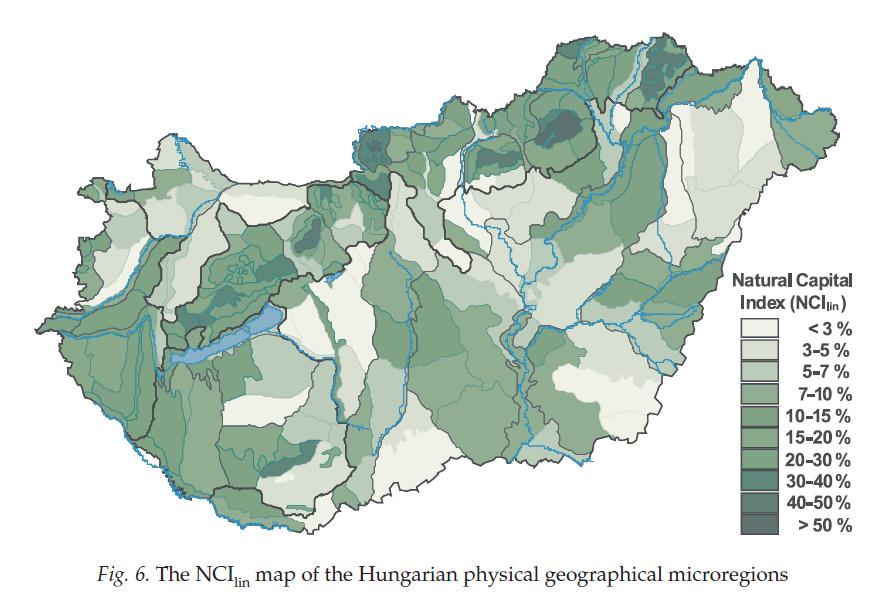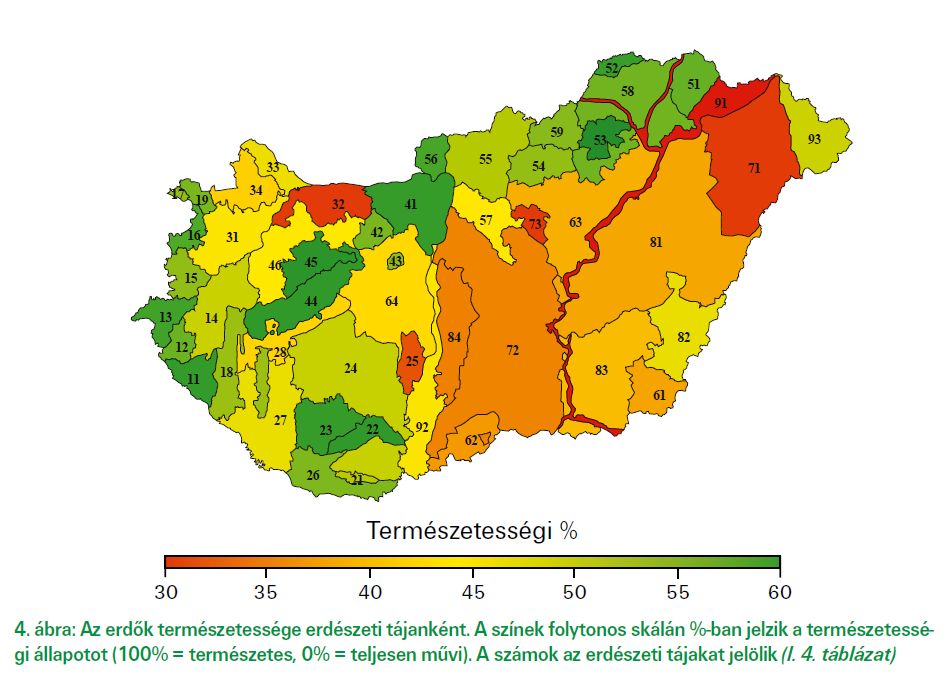Natural Capital Index

The indicator developed here is based on the Natural Capital Index (NCI) framework first developed in the Netherlands, reflecting the “distance” of a complex landscape, consisting of a variety of habitats, from its original natural state. The indicator estimates how much still remains of the original natural flora and fauna (especially the latter) of the given area. The greater the size and the naturalness of the habitats in the region, the greater the value of the index. The Natural Capital Index of Hungary is unfortunately very low - depending on the method of calculation, 3.2% or 9.8% - meaning that more than 90% of the natural flora and fauna once populating the country have been destroyed.


